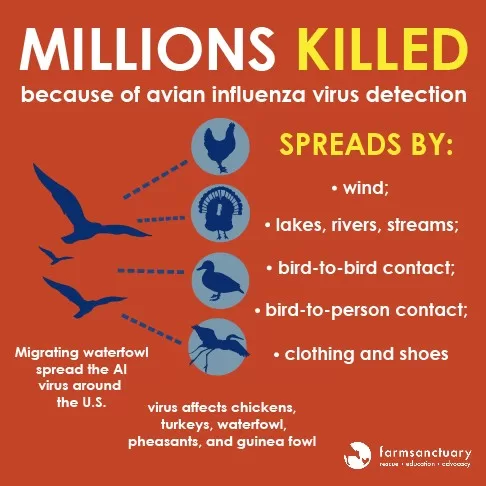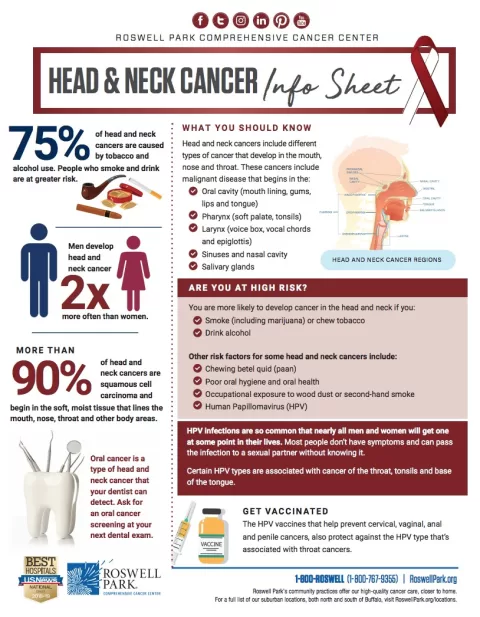The recent bird flu outbreak has sent shockwaves through the agricultural landscape, highlighting the complex battle against avian influenza. As wild bird migration intensifies, experts warn that the virus could potentially spread even further, challenging the already strained response efforts. With significant federal health cuts diminishing oversight and support, the risk of burgeoning bird flu variants looms large. While the number of outbreaks has decreased, the concerns surrounding new mutations of the virus are escalating, particularly as they may impact both livestock and human health. The looming question remains: how can we effectively combat the ever-evolving threat of bird flu amidst these unprecedented challenges?
In recent months, the resurgence of avian influenza has raised alarms across the nation, prompting discussions about the growing need for vigilance. This strain of bird flu, often linked to various bird species and their migratory patterns, presents a significant challenge, especially as federal initiatives face cutbacks. With fewer resources dedicated to monitoring and research, the potential for devastating outbreaks looms on the horizon. As health officials grapple with the implications of these federal health cuts, the interconnectedness of wildlife and agriculture underscores the urgency of an effective response. The ongoing battle against such influenza variants serves as a chilling reminder of the intricate web of health and environmental considerations we must navigate.
Understanding the Bird Flu Outbreak
The bird flu outbreak, known scientifically as avian influenza, has emerged as a significant threat to both avian and mammalian populations in the U.S. This outbreak is marked by its unpredictable nature, as the virus has shown a remarkable ability to jump between species, causing alarm among health officials and farmers alike. The recent outbreak that has swept the nation represents the worst incident in U.S. history, with the potential for future bird flu variants to continue spreading if adequate measures are not taken. As wild birds migrate northward, experts predict that the risk of transmission to domestic animals and possibly humans remains high, prompting widespread concern.
Current data indicates a troubling trend, with confirmed outbreaks in poultry dropping recently; however, the overall unpredictability of the virus’s behavior makes it difficult to ascertain whether this decline is temporary or a sign of something more lasting. As experts continue to analyze the bird flu’s trajectory, they warn that a resurgence could coincide with the seasonal migration of wild birds, a critical factor in spreading avian influenza. Given the potential impact of bird flu variants on livestock and agriculture, close surveillance and monitoring become imperative, especially in light of reduced federal resources dedicated to this crisis.
The Impact of Federal Health Cuts on Bird Flu Control
The recent cuts to the federal Department of Health and Human Services, which include a drastic reduction in staffing at the FDA’s Center for Veterinary Medicine, have raised serious concerns regarding the U.S. government’s ability to tackle the ongoing bird flu crisis effectively. These cuts come at a critical time when the outbreak is still unfolding, necessitating diligent oversight to prevent further transmission of avian influenza. The experienced staff who worked on the initial response to the outbreak and aided in the development of effective diagnostic protocols are now being eliminated, jeopardizing the country’s response capabilities.
Health experts have voiced their apprehensions about the lack of federal support that previously facilitated timely surveillance and containment efforts. As less attention is paid to monitoring the virus’s spread, the chances of potential outbreaks and the evolution of bird flu variants increase. This situation mirrors broader concerns raised by industry professionals about the long-term implications for veterinary medicine and public health. With fewer resources available to track and contain avian influenza, the risk that the virus may mutate into a more harmful strain persists, underscoring the urgent need for a robust response strategy even amidst funding cuts.
The Role of Wild Bird Migration in the Spread of Bird Flu
Wild bird migration plays a pivotal role in the transmission of avian influenza, as these birds often act as carriers, transporting varying strains of the virus across vast distances. As migratory patterns shift with the changing seasons, so too does the risk of outbreaks among domestic flocks and other wildlife. Experts closely monitor migration routes to identify when and where the bird flu virus may pose a risk to farms and livestock populations. The arrival of migratory species in the U.S. during spring and summer heightens concerns about encountering new bird flu variants that may have evolved in South America or other regions.
The interaction between wild birds and domestic animals remains a major pathway for the establishment of bird flu in non-avian species, including cattle and mammals. This heightened interaction is deemed especially dangerous, as the previous spread of avian influenza from birds to cattle demonstrates how quickly the virus can adapt and affect other species. Scientists emphasize that as birds mingle with livestock, the potential for new variants to emerge increases, which could escalate into severe human health crises. Therefore, efforts aiming to monitor this migration and mitigate risks are crucial to protect both agriculture and public health.
The Economic Consequences of the Bird Flu Outbreak
The bird flu outbreak has far-reaching economic implications, particularly in agricultural sectors reliant on poultry production. With the outbreak being classified as the worst in U.S. history, egg prices surged to unprecedented highs, reflecting the crisis’s profound effects on the supply chain. Farmers have faced challenges, including the need to cull infected flocks and increased biosecurity measures, which have strained financial resources. As the situation remains fluid, continual monitoring of bird flu cases may help stabilize the market, but the current economic landscape showcases the disruption the virus can cause.
In addition to poultry, the outbreak has also impacted dairy sectors, particularly following the infection of cattle with avian influenza. As more species become involved and the public grows aware of food safety concerns, market anxieties are heightened, leading to fluctuations in prices across various agricultural commodities. Furthermore, the uncertainty surrounding future outbreaks and the introduction of new bird flu variants only adds to the volatility of food prices. Consequently, an integrated response is needed not only to address health concerns but also to safeguard the economic stability of the agricultural industry.
Monitoring and Containing New Bird Flu Variants
As new variants of avian influenza, such as the H7N9 strain, emerge, it underscores the critical need for enhanced monitoring and containment strategies to combat the evolving threat of bird flu. The recent detection of H7N9 in a Mississippi poultry farm serves as a stark reminder that the virus can present grave risks to both animal and human health. Such variants, particularly those known for their virulence, call for rigorous surveillance and the development of proactive measures to prevent their spread. Experts advocate for collaborative efforts between state agencies, veterinarians, and public health officials to ensure rapid response capability when new cases arise.
Additionally, increasing public awareness about bird flu variants is essential to facilitate early detection and trace outbreaks effectively. With fewer federal resources currently allocated to monitoring avian influenza, state and local authorities must step up their efforts to collect data and implement testing protocols for farms and wildlife populations. The evolving nature of the bird flu virus requires a dynamic approach, focusing not only on immediate response but also on long-term strategies to safeguard both livestock and human health against potential zoonotic spillovers.
Agricultural Responses to Bird Flu Challenges
Farmers across the United States are grappling with complex challenges posed by the bird flu outbreak, necessitating an adaptable approach to agricultural practices. In response to the growing threat, many farms are implementing enhanced biosecurity measures to protect their livestock from potential exposure to avian influenza. This includes increased surveillance, strict quarantine protocols for new livestock, and vaccination strategies to bolster herd immunity. The ability of farmers to swiftly adapt to new developments will be crucial in mitigating losses and ensuring the safety of their products in a market fraught with uncertainty.
Moreover, access to adequate resources and support systems from local, state, and federal agencies is essential for farmers facing the repercussions of bird flu. Enhanced educational programs regarding biosecurity practices, vaccination protocols, and outbreak response plans can help equip agricultural producers with the tools needed to combat this crisis effectively. As the situation evolves, ongoing collaboration between farmers, veterinarians, and public health experts will be vital to not only respond to bird flu outbreaks but also safeguard the livelihoods of those dependent on agricultural production.
Public Health Concerns Associated with Bird Flu Outbreaks
The connection between avian influenza outbreaks and public health concerns cannot be overstated. While the immediate risk to the general public has remained low, the potential for the virus to mutate into a more transmissible strain poses significant risks. As seen with past outbreaks, any shift in the virus’s genetic structure could lead to the emergence of a strain that is both highly contagious and lethal among humans. Experts emphasize the importance of constant vigilance in monitoring avian influenza variants, especially as these viruses spread beyond birds into other mammals — a pattern observed with the infection of domestic cats and other wild animals.
To effectively mitigate the risks posed by bird flu, public health agencies need to maintain robust tracking mechanisms to quickly respond to emerging outbreaks. This includes integrating surveillance efforts in healthcare systems with animal health monitoring to ensure that any potential zoonotic transmission is swiftly addressed. Developing preparedness plans that incorporate potential public health scenarios can help build resilience against the unpredictability of bird flu outbreaks while ensuring that healthcare systems can cope with sudden increases in cases. Enhanced communication and collaboration among public health and veterinary authorities will be instrumental in safeguarding overall community health.
The Future of Bird Flu Research and Vaccination Efforts
As the threat from avian influenza evolves, the future of bird flu research and vaccination efforts is a priority for health organizations and agricultural sectors alike. Ongoing studies into the genetic makeup and transmission pathways of bird flu variants are crucial for developing effective vaccines. With the emergence of strains with increased virulence, researchers are dedicated to refining vaccine formulations that can respond to these threats proactively. Investing in research initiatives tailored toward understanding the virus’s mutations and epidemiology will provide critical insights into preventing future outbreaks.
Moreover, collaboration with the FDA and other health authorities plays a pivotal role in facilitating timely access to vaccinations for both poultry and potentially exposed livestock. The importance of vaccination cannot be overstated; it represents a critical line of defense in the health of both animals and humans. Continued funding and support for research programs focused on bird flu will be essential in ensuring that future vaccination efforts are not only effective but also capable of addressing new variants as they arise in the migrant bird populations.
Global Perspectives on Bird Flu Management
The threat posed by avian influenza is not limited to the U.S.; it is a global concern that necessitates international cooperation for effective management. Countries around the world are grappling with their own challenges regarding the containment of bird flu, with varying degrees of success. Collaborative efforts in research and policy development can lead to more standardized protocols for monitoring, reporting, and controlling outbreaks across borders. By sharing data and best practices, nations can better prepare for the potential consequences of avian influenza as it traverses internationally with migratory bird patterns.
Furthermore, addressing the socioeconomic implications of bird flu globally requires a united front among nations. The impacts of outbreaks extend beyond agricultural losses; they affect food security, public health, and economic stability. Global strategies aimed at enhancing biosecurity measures and implementing vaccination campaigns among poultry populations can mitigate the spread of the virus. International partnerships can also facilitate technological advancements in diagnostics and treatment options, fostering a cooperative approach to managing the avian influenza crisis on a worldwide scale.
Frequently Asked Questions
What is the current status of the Bird Flu Outbreak in the U.S.?
The Bird Flu Outbreak is currently slowing in some areas, but health experts warn that it could resurge with the spring migration of wild birds, potentially introducing new avian influenza variants into the U.S.
How does wild bird migration affect the Bird Flu Outbreak?
Wild bird migration plays a crucial role in the Bird Flu Outbreak, as migrating birds can spread avian influenza to domestic flocks and other species. This migration typically peaks in May and June, raising concerns for potential new outbreaks.
What impact do federal health cuts have on the FDA’s response to bird flu?
Recent federal health cuts have reduced the resources available to the FDA for managing the Bird Flu Outbreak. The loss of key personnel responsible for monitoring and responding to avian influenza may hinder efforts to control the spread and evolution of the virus.
What are the concerns regarding new bird flu variants during the outbreak?
There are significant concerns that as the Bird Flu Outbreak continues, new avian influenza variants could emerge from migrating birds. In March, the detection of the H7N9 variant on a Mississippi poultry farm highlighted the potential dangers posed by novel strains during migrations.
How does the bird flu outbreak affect agriculture and food prices?
The ongoing Bird Flu Outbreak, considered the worst in U.S. history, has drastically impacted agriculture, leading to skyrocketing egg prices and creating challenges for farmers. While some recent declines in outbreaks are noted, experts warn that food prices could rise again with the continuation of the outbreak.
What measures should be taken to address the Bird Flu Outbreak effectively?
Experts recommend aggressive monitoring of the Bird Flu Outbreak among both animal populations and human contacts. This includes seeking out the virus early to prevent large-scale outbreaks, especially as birds migrate northward.
What implications do bird flu cases in mammals have for public health?
The emergence of bird flu in mammals, including domestic cats and various wild species, raises public health concerns. The unchecked spread of the virus among these animals increases the risk of a strain capable of impacting human health.
How can the public stay informed about the Bird Flu Outbreak?
Staying informed about the Bird Flu Outbreak involves following updates from public health organizations like the CDC and USDA, which provide guidelines and information on the ongoing situation and potential risks.
| Key Points | Details |
|---|---|
| Bird Flu Outbreak Status | The bird flu outbreak has slowed recently, but wild birds migrating north may carry the virus back to U.S. |
| Federal Cuts Impacting Response | Recent cuts in the Department of Health and Human Services have reduced federal personnel dedicated to tracking and responding to bird flu outbreaks. |
| Geographical Spread | The virus has now jumped from birds to cattle and is detected in various mammals, raising concerns about its transmission and mutation. |
| Emerging Variants | Variants like H7N9, which could be deadly to humans, are emerging, raising fears of a potential increase in human cases. |
| Human Cases and Risks | Currently, there are 70 confirmed human cases in the U.S. which reflect a low public risk, yet threaten mutation into more dangerous strains. |
Summary
The Bird Flu Outbreak remains a critical health concern as wild birds migrate north, potentially carrying the virus with them. Recent federal cuts have reduced the staffing and resources available for tracking and managing avian influenza, complicating response efforts. It is essential to remain vigilant and proactive in monitoring the situation, as the risk of emerging variants poses a significant threat to both animal and human populations.
The content provided on this blog (e.g., symptom descriptions, health tips, or general advice) is for informational purposes only and is not a substitute for professional medical advice, diagnosis, or treatment. Always seek the guidance of your physician or other qualified healthcare provider with any questions you may have regarding a medical condition. Never disregard professional medical advice or delay seeking it because of something you have read on this website. If you believe you may have a medical emergency, call your doctor or emergency services immediately. Reliance on any information provided by this blog is solely at your own risk.







